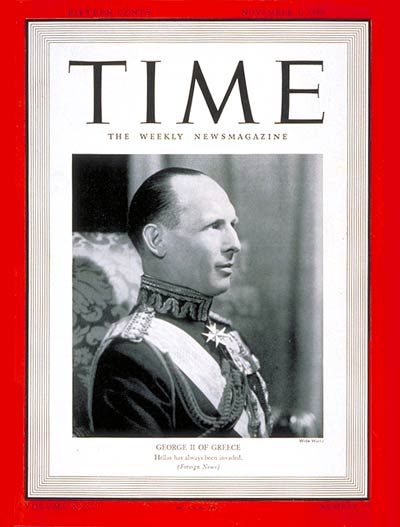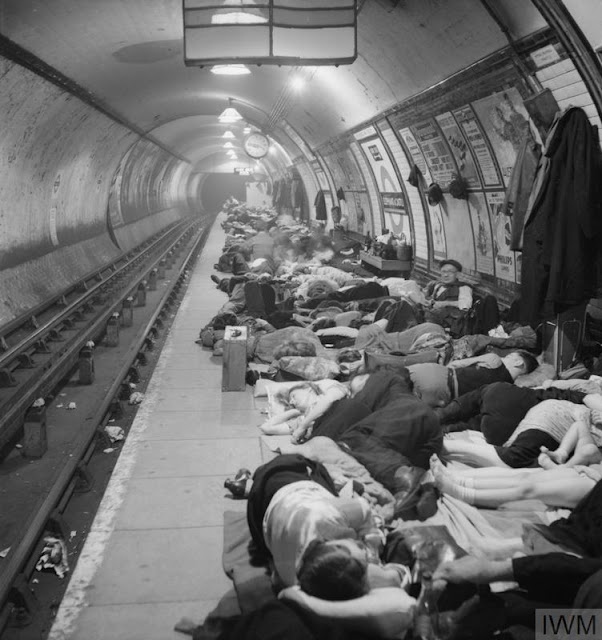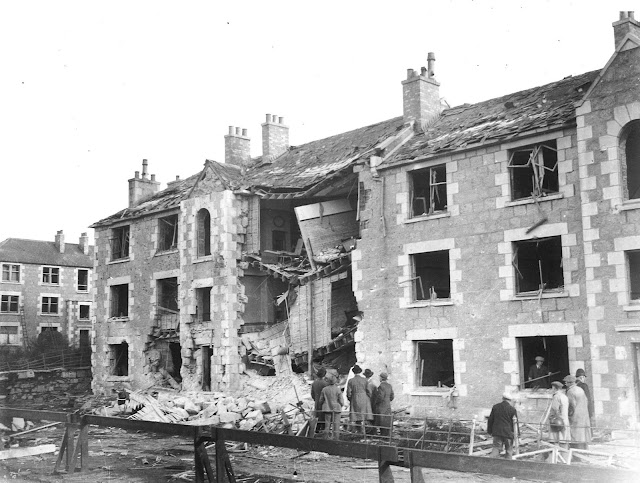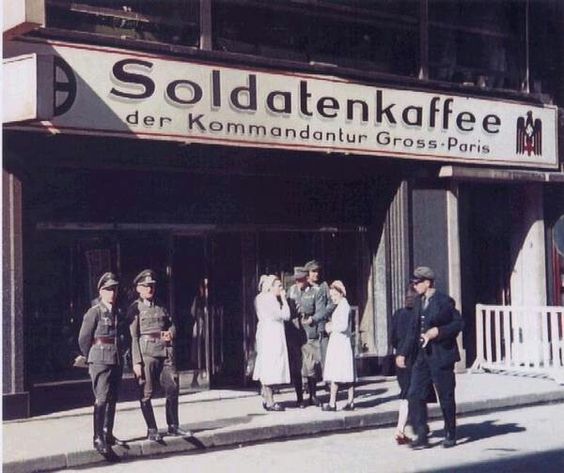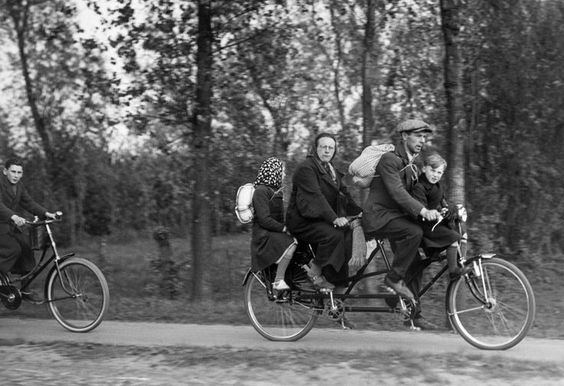Tuesday 18 March 1941
 |
| "Police and Army bomb disposal officers with a defused German 1000kg 'Luftmine' (parachute mine) in Glasgow, 18 March 1941." © IWM (H 8281). |
The main activity is in the air, with the Allies bombing Italian installations at the ports of Valona and Durazzo. They sink Italian torpedo boat Aldebaran.
East African Campaign: In east-central Abyssinia, the Italian defenses are oriented around Debre Marqos (Mankorar). It is a major Italian fortification. Naturally, that makes it a prime target for the British. Gideon Force and Ethiopian Arbegnoch (Resistance Fighters), spurred on by the presence relatively nearby of Emperor Haile Selassie, approach the town to isolate it. This is an old hat for the native troops, who previously besieged the town in 1938. Only determined counterattacks by General Ugo Cavallero, supported by 60,000 troops, tanks and planes had crushed the native uprising.
At Keren in Italian Eritrea, the British basically are stymied again. They have taken some ground on both sides of the strategic Dongolaas Gorge, including the important Fort Dologorodoc to the right of the gorge. However, the Italians still occupy the high ground overlooking all of the British positions and are counter-attacking furiously. Major-General Lewis Heath, commander of the Indian 5th Infantry Division that now is in possession of Fort Dologorodoc, now feels that another attempt should be made to force the gorge, that is, simply attack straight up the gut in the hope that the Italians may have neglected their defenses there.
Accordingly, the British begin surveying the gorge itself. Heath has his troops escort engineers into the gorge. They find that the Italians have dumped rocks and debris into it, blocking the way. The engineers make a start to clearing the way. However, the small parties come under heavy Italian defensive, and the effort must be abandoned.
Heath, though, has learned something from the attempt. He sees that the most effective Italian fire is coming from two features called the "Railway bumps" which overlook the gorge. This area is accessible from Cameron Ridge on the left of the gorge by following a railway line that goes through a tunnel beneath the ridge. General Platt and Heath decide to discontinue the current attacks, simply hold what has been achieved so far, and prepare an attack on the Railway bumps. This, the theory goes, would give the engineers enough time to clear the gorge and make it possible for British forces to get through it.
The Italians indeed are counterattacking furiously. One attack to retake Fort Dologorodoc is led personally by General Raimondo Lorenzini. Lorenzini is the tactical commander for the most important sector of the Italian defenses. Lorenzini, considered one of the best and brightest of the new generation of colonial commanders, perishes in the attack.
 |
| Douglas Bader at RAF Tangmere (Tangmere Military Aviation Museum). |
On the 18th/19th March: Hull suffered most, but other places in the East Riding were involved, noticeably Scarborough, which was bombed intermittently for four hours. This seems incongruous in comparison with the value of other objectives in the district. Some bombing took place in the North Midlands, Eastern Regions, London, the South and South-East Counties and Folkestone.RAF Bombing Command puts 99 bombers over Kiel, 44 over Wilhelmshaven and 19 over Rotterdam.
Visiting Australian Prime Minister Robert Menzies continues his tour of northern England. He visits the recently bombed Old Trafford Cricket Grounds and notes, "Hole in pitch. Stands ruined." He also notes, "In Manchester, as much as 3 blocks adjoining completely destroyed."
Douglas Bader receives a promotion to Acting Wing Commander. He commands RAF Nos. 145, 610, and 616 Squadrons at Tangmere.
 |
| An aerial mine in Liverpool, 1941. |
The seas quiet down, so German raider Kormoran finally has a chance to transfer the seven torpedoes that it has been carrying to U-124.
German battleship Bismarck departs from Gotenhafen (Gdynia), where it just arrived yesterday, to conduct sea trials in the Baltic.
The German 1st S-boat Flotilla sends half a dozen motor torpedo boats to attack shipping off the English east coast. S-102 badly damages 1970 ton British freighter Daphne II off the Humber Estuary near Buoy 59. The captain quickly beaches the ship near the Bull Lightship, but it eventually breaks up and is lost.
U-105 (Kapitänleutnant Georg Schewe) stalks Convoy SL-68 off the Cape Verde Islands. It sinks 4380-ton British freighter Medjerda.
Italian submarine Emo launches a torpedo at 4500-ton British freighter Clan MacIver southwest of Iceland but misses.
German 51,731-ton liner Bremen, which caught fire yesterday apparently due to an arsonist cabin boy, explodes and is lost. The hulk will remain where it is throughout the war.
The RAF drops an aerial torpedo on 5972-ton German freighter Widar and sinks it.
Royal Navy minesweeper HMS Rothesay and submarine Thorn are launched.
US destroyers USS Cowie and Knight are laid down.
U-464 is laid down.
Battle of the Mediterranean: Afrika Korps commander General Erwin Rommel once again flies from Tripoli to meet with Hitler. They are to plan offensive operations for the growing German presence in North Africa. Hitler tells Rommel to wait for reinforcements before attacking.
RAF Swordfish torpedo bombers of No. 830 Squadron based in Malta (since the attacks on HMS Illustrious) attack Tripoli Harbor. The British lose one plane, while its crew becomes POWs.
RAF Albacore torpedo planes from HMS Formidable, RAF No. 826 Squadron, torpedo 510-ton Italian freighter Labor and destroy two Italian lighters at Buerat el Hsur. The Labor makes it to Tripoli despite the damage. The British lose one of the Albacores, and the crew perishes.
Royal Navy 1552 ton armed boarding vessel HMS Rosaura hits a mine and sinks near Mersa Tobruk. There are 14 crew deaths, five military guard deaths, and 59 Italian POW deaths.
Royal Navy light cruiser HMS Gloucester departs from Alexandria bound for Piraeus. It carries 1087 Australian troops and General Blamey, Commander of the Australian Corps.
Convoy AG 7 departs from Alexandria bound for Piraeus. It has seven ships escorted by a light cruiser (HMS Carlisle) and two destroyers (Voyager sand Wryneck). It will be joined by a troopship (Ulster Prince) departing from Tobruk. Convoy AN 21's 13 ships depart from Alexandria bound for Piraeus. Convoy AS 20 of six ships departs from Piraeus bound for Alexandria and then Port Said.
Convoy BS 20 departs from Suez.
 |
| The future Queen Elizabeth II, 1941. |
Anglo/Free French Relations: The Free French establish their own bank in London.
US/Canadian Relations: The US military and Canadian military have been coordinating defense efforts. Today, they make it official with a joint defense pact. This includes enhanced efforts at cooperation in shipbuilding on the Great Lakes.
British Government: The Pilgrims Society, an organization designed to promote Anglo/US relations, has a major luncheon at London's Savoy Hotel. Attending are all the bigwigs of London wartime society: Prime Minister Winston Churchill, US Ambassador John Winant, and many ministers. One of those ministers is Lord Woolton, the Minister of Food. Woolton has a surprise for the guests: Woolton Pie. This is a brand new culinary creation that Woolton has asked the hotel's chef to create. Basically, it is a vegetarian pie composed of potato, cauliflower, swedes, carrots, spring onions seasoned with a teaspoonful of vegetable extract. Churchill hates it and tells the waiter to bring him some beef.
German Government: Adolf Hitler meets with his senior military staff to discuss high-level strategy. Admiral Raeder asks Hitler to recommend to the Japanese that they attack Singapore and to reveal to them plans for Operation Barbarossa so the two countries can coordinate attacks.
The Germans reorganize coal mining and distribution. The German railway system, upon which all major Wehrmacht movements depend, relies on coal. It is the only energy source that is in relatively plentiful supply in wartime Germany.
 |
| USS Matagorda (AVP-22) at the Boston Navy Yard. "The U.S. Navy seaplane tender USS Matagorda (AVP-22) just after her launching at the Boston Navy Yard, Massachusetts (USA), on 18 March 1941. The stern of her sister ship, USS Humboldt (AVP-21), launched a day earlier, is visible to the left." Photograph from the Bureau of Ships Collection in the U.S. National Archives and Naval History and Heritage Command. |
American Samoa: The US Marine Corps 7th Defense Battalion arrives. Rear Admiral Newton's cruiser force there prepares to depart for its visit to Sydney, Australia.
Spain: Spain officially annexes the international zone of Tangier, on the other side of the Strait of Gibraltar. Officially, Tangier is a condominium jointly governed by France, the UK, and Spain, but during wartime, nobody wishes to complain. In a way, this benefits the Allies, as the annexation essentially takes the strategically useful territory, which otherwise is basically surrounded by French territory, out of play. This will be reversed immediately after the war when nobody cares any longer about offending Franco.
India: Subhas Chandra Bose, having escaped from India, is traveling under an assumed name as an Italian Embassy official. He is in Afghanistan and departs from Kabul today. He is seeking sanctuary in the Soviet Union and, ultimately, Europe.
China: At the continuing Battle of Shanggao, the Japanese breach the Chinese first line of defenses after vicious fighting. The Chinese 19th Army Group's 9th War Area holds against further Japanese penetrations by the Japanese 11th Army around Kuchuao and Huamento. After that, the fighting dies down as both sides recover and bury their dead.
British Homefront: After lunch, Lord Woolton appears before the House of Commons and gives a speech about the challenges facing the country in his domain of the food supply. He focuses on the milk trade, praising their dedication in maintaining milk supplies in the face of many obstacles. He notes, though, that "certain other difficulties arising from the war" necessitate a "a policy governing the consumption of milk as well as its production." Finally getting to the point, he states:
I have decided to restrict the consumption of milk by the ordinary man and woman who do not come under the categories I have already described (such as expectant and nursing mothers and children). I am asking dairymen, from the middle of April, to reduce their domestic sales by approximately one-seventh.... I appeal to the public to support the milk man in carrying out these instructions.He also announces other economies, such as requiring bakers to forego the use of milk and a continuance of the ban on the use of fresh cream.
Future History: Wilson Pickett is born in Prattville, Alabama. As a child, he sings in the church choir, then moves to Detroit to live with his father. In 1955, Wilson joins gospel group the Violinaires, and in 1959 records "Let Me Be Your Boy" with Florence Ballard and the Primettes. It ultimately is released in 1963 as the B-side of "My Heart Belongs to You." He continues recording, occasionally hitting the R&B charts, then hits the big time with Atlantic in the mid-1960s. His big hit is "In the Midnight Hour" in 1965, which sells over a million copies. He later records at Stax and has more hits, but records only sporadically, especially after RCA drops him in 1975. Aside from his singles, he is perhaps best remembered for his appearance in "Blues Brothers 2000," singing "634-5789." Wilson Pickett passes away on 19 January 2006 in Reston, Virginia.
 |
| "The U.S. Navy seaplane tender USS Matagorda (AVP-22) during her launching at the Boston Navy Yard, Massachusetts (USA), on 18 March 1941." Photograph from the Bureau of Ships Collection in the U.S. National Archives and Naval History and Heritage Command. |
March 1, 1941: Rettungsboje
March 2, 1941: Oath of Kufra
March 3, 1941: Germans in Bulgaria
March 4, 1941: Lofoten Islands Raid
March 5, 1941: Cooperation With Japan
March 6, 1941: Battle of Atlantic
March 7, 1941: Prien Goes Under
March 8, 1941: Cafe de Paris
March 9, 1941: Italian Spring Offensive
March 10, 1941: Humanitarian Aid
March 11, 1941: Lend Lease Become Law
March 12, 1941: A New Magna Carta
March 13, 1941: Clydeside Wrecked
March 14, 1941: Leeds Blitz
March 15, 1941: Cruisers Strike!
March 16, 1941: Kretschmer Attacks
March 17, 1941: Happy Time Ends
March 18, 1941: Woolton Pie
March 19, 1941: London Hit Hard
March 20, 1941: Romeo and Juliet
March 21, 1941: Plymouth Blitz
March 22, 1941: Grand Coulee Dam
March 23, 1941: Malta Under Siege
March 24, 1941: Afrika Korps Strikes!
March 25, 1941: Yugoslavia Joins The Party
March 26, 1941: Barchini Esplosivi
March 27, 1941: Belgrade Coup
March 28, 1941: Cape Matapan Battle
March 29, 1941: Lindbergh Rants
March 30, 1941: Commissar Order
March 31, 1941: Cookie Bombs
2020

